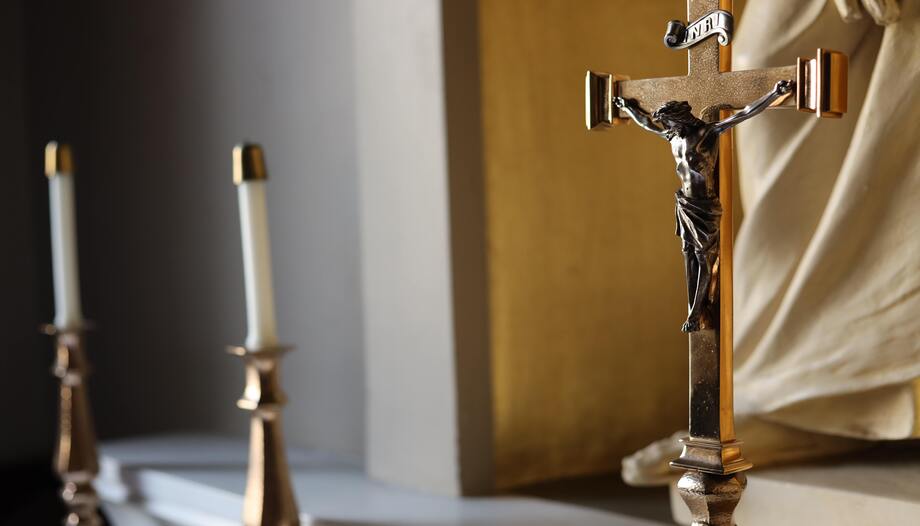In the two previous fascicles, we discussed the meaning of the other four sacraments which, together with the three that will occupy us in these lines, correspond to all the important moments of the Christian's life: they give birth and growth, healing and mission to the journey of faith.
What are the material element, human gestures and words in the sacrament of Marriage?
The marriage is a sacrament because it contains the necessary elements for it: the sensible sign -contract or covenant-, sanctifying and sacramental grace, and the fact that it was instituted by Christ.
The matter is "remote" - the spouses themselves - and "proximate" - the reciprocal gift of the spouses, who mutually give each other their whole person, their whole being.
The external sign of this sacrament, as we said, is the marriage contract or covenant, which at the same time make up the form. The form is the "yes", which signifies the reciprocal acceptance of this personal and total gift.
This covenant is expressed in the marriage rite in the following words: "...".I (name of the contracting party) take you (name of the contracting party) to be my spouse, to have and to hold and to keep from this day forward, for better or for worse, for richer or for poorer, in sickness and in health, to love and to cherish until death do us part.".
Marriage is born of the personal and irrevocable consent of the spouses manifested by such words - cf. Catechism of the Catholic Church, 1626-.
Since marriage is a state of life in the Church, there must be certainty about it; hence the obligation to have witnesses; hence the public character of consent, which protects the "yes" once it is given and helps to remain faithful to it - cf.
What are the material element, human gestures and words in the sacrament of priestly ordination?
The subject matter of the sacrament of Priestly ordination -or Holy Orders - is the imposition of hands. This is a moment in the rite of celebration of this sacrament in which the bishop, placing his hands on the heads of the candidates to the priesthood, addresses the Lord imploring his assistance for them.
The form refers to the consecratory prayer that the liturgical books prescribe for each degree -diaconate, presbyterate and episcopate-. In it, the Holy Spirit is asked to confer on the candidates the sacrament of priestly ordination in the corresponding degree.
In the ordination of priests, the form is constituted by the words of the prayer that the bishop says after the ordained has received the imposition of hands. The essential words are: "We ask you, Almighty Father, to confer on these servants of yours the dignity of the priesthood; renew in their hearts the Spirit of holiness; let them receive from you the priesthood of the second degree and let them be, by their conduct, an example of life." -ritual of Ordination-.
What are the material element, human gestures and words in the sacrament of the Anointing of the Sick?
The Anointing of the Sick takes place in the family, in the hospital or in a church, for a single sick person or for a group of them. If circumstances permit, the celebration of the sacrament may be preceded by the sacrament of Reconciliation and followed by Communion, in which case the liturgy speaks of "viaticum" or passage to eternal life.
The celebration begins with a penitential act - repentance for having sinned before God - followed by the liturgy of the word - reading of some passages of sacred scripture.
The minister - a priest - anoints the sick person with what constitutes the material of the sacrament: the oil consecrated by the bishop on Holy Thursday. The anointing is performed on the forehead and on the palms of the hands of the sick person, pronouncing in turn the following words: "By this holy anointing, and by his kind mercy, may the Lord help you with the grace of the Holy Spirit so that, freed from your sins, he may grant you salvation and comfort you in your illness.".
With this fascicle we conclude the brief exposition we proposed on the subject, the gestures and words in each of the seven sacraments. The intention was none other than to "visualize" the celebration of each of them in these three aspects, through which sacramental grace acts in the soul of the one who receives them, and sanctifies him.








